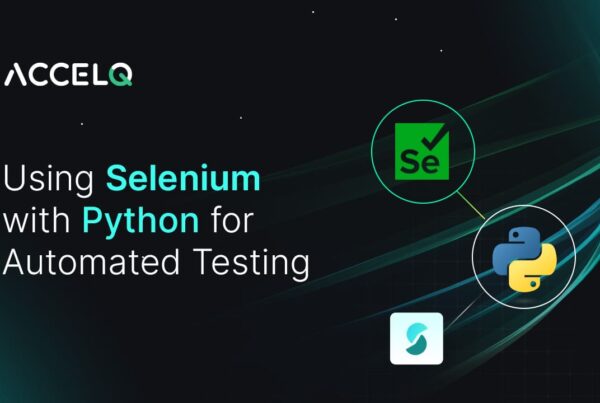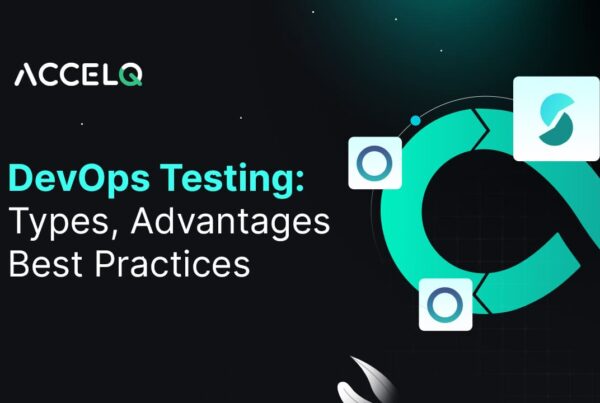GAP Analysis in Testing: How AI Impact?

It is common for software testing procedures to be inefficient, resulting in delayed releases and errors discovered after production. This is when gap analysis comes into play during the process. Companies can significantly improve the quality of software releases and their efficiency. This blog provides valuable insights into the concept of gap analysis in testing.
What Is Gap Analysis in Testing?
Gap Analysis is a methodical approach organizations use to identify the differences between the current state of a testing process and expected performance. This analysis helps recognize areas that need improvement and the steps required to bridge the gaps.
key Takeaways:
- It includes defining objectives, assessing the situation, finding gaps, and creating an action plan.
- The primary goal is to improve the robustness and comprehensiveness of the testing process.
- Conducting gap analysis improves software quality and ensures that all requirements are thoroughly tested.
When to Perform a Gap Test?
A gap test should be performed at various stages of the software development lifecycle to ensure the effectiveness and efficiency of the testing process.
Project Inception: Understanding the testing capabilities now in place and determining the needs for the new project are made easier when a gap analysis is done at the beginning of a project. This gives creating an efficient testing plan a clear path.
Pre-Deployment: Before deploying, it ensures all the critical features have been tested, and no significant gaps are left unaddressed. Avoiding post-deployment problems and guaranteeing a seamless launch depends on this stage.
Post-Deployment: A gap test might reveal any unresolved problems or holes that were missed in the first stages of testing a software product. Preserving and ongoing development depend on this.
Process Improvements: Organizations can identify A gap study that can point up areas of weakness and offer a road map for improvements when a company wants to strengthen its testing procedures. Especially helpful is this when implementing new testing techniques or during Agile transformations.
Tools or Technology Upgrades: Understand the limitations and potential improvements that new tools can bring.
How to do Gap Analysis in Software Testing?
Performing a gap analysis in software testing involves a structured approach to pinpoint and address discrepancies between current practices and desired goals. Here’s a refined, subjective guide on how to conduct a gap analysis effectively:
Step 1: Define Clear Objectives and Collect Data
- What do you hope to achieve? Define the scope, whether it’s increasing test coverage, boosting tool efficiency, or simplifying procedures.
- Compile extensive information about the testing procedures you now use. Compiling test plans, bug reports, performance reports, and team member comments is part of this. Your analysis’s basis is laid by this first phase.
Step 2: Evaluate the Current State and Predict the Ideal Future
- Examine in great detail the testing procedures you now use. Jot down the good and the bad. Point up any obvious flaws or places that won’t work.
- Describe next the perfect testing procedure. Create measurable, doable objectives that complement corporate norms and industry best practices. Your standard by which to compare will be this vision.
Step 3: Identify and Prioritize Gaps
- Find gaps by comparing current affairs with the specified ideal condition. Seek differences in teamwork, process effectiveness, tool use, and test coverage.
- As gaps are found, rank them according to how they affect the project results and the whole testing process. Concentrate on the most important holes that would make your testing far more successful if they were filled.
Step 4: Develop and Implement an Action Plan
- Organize a thorough plan of action to close the gaps that have been prioritize. This plan ought to contain precise actions to be done, dates, responsibilities to be given, and the required resources.
- Put the adjustments into practice, starting with your action plan. This might be implementing new testing instruments, changing testing procedures, educating your staff, or improving test coverage plans.
Step 5: Monitor Progress
- Continually track the development of your implementation. Ensure the adjustments achieve your goals by gauging their efficacy using key performance indicators (KPIs).
- Examine the action plan often and make necessary adjustments. For process refinement, get input from stakeholders and your team. For future reference and ongoing development, record every discovery and modification.
What are the Best Practices for Gap Analysis?
Implementing best practices in gap analysis ensures that the process is thorough and effective and yields actionable insights.
Involve Stakeholders
Including testers, developers, project managers, and business analysts. Their opinions help uncover gaps and comprehend their impact on the project.
Utilize Data-Driven Insights
Rely on data rather than assumptions for analysis. Gather quantitative and qualitative data from test reports, defect logs, performance measurements, and user feedback.
Identify High-Impact Areas
Prioritize gaps that significantly affect testing quality and efficiency. Starting with high-impact areas ensures significant changes with fewer resources.
Documentation
Clearly document and communicate findings from your gap analysis, including identified gaps, priority, and action plan.
Case Study
Using a fictitious example of a mid-sized software development company creating a new mobile application, let's see how gap analysis functions in software testing. Enhanced testing aims to guarantee faster release cycles and better quality.
Scenario: The company has dealt with many post-release flaws and pushed back project deadlines because of ineffective testing procedures. This problem is found and addressed by a gap analysis.
Step 1: Establish Goals and Compile Information
- Objective: To fulfill project deadlines, increase test coverage, lower post-release issues, and expedite the testing procedure.
- Data Collection: Compile test execution reports, defect logs, test plans that are now in place, and testing staff input.
Step 2: Evaluate the Current State and Envision an Ideal Future
- Current State: The study shows that important features are frequently disregarded and that the testing procedure, as it now has insufficient test coverage. Inefficient testing techniques and overlooked flaws result from the team’s use of antiquated tools.
- Expected State: Comprehensive test coverage, current tools, and effective processes should be features of the perfect testing process to identify flaws early on and guarantee project completion on schedule.
Step 3: Identify and Prioritize Gaps
- Gaps Identified:
- Not enough testing of essential features.
- Older testing equipment is inefficient.
- The results of standardized testing methods are not always consistent.
- Priority: The gaps are arranged according to the importance of project schedules and fault rates.
Step 4: Develop and Implement an Action Plan
- Action Plan:
- Ensure thorough testing by increasing test coverage to include all essential features.
- Change out your testing instruments for more contemporary, effective ones.
- For consistency and dependability, create and put into practice standardized testing protocols.
- Implementation: The testing staff starts with adding to their test cases and upgrading their equipment. Training sessions are held to acquaint the staff with new processes and resources.
Step 5: Monitor Progress
- Monitoring: The effect of the modifications is measured by tracking key performance indicators (KPIs) like defect rates, test coverage percentages, and testing duration.
- Review and Modify: To gauge development, evaluations are carried out frequently. The action plan is adjusted when needed based on team feedback.
Outcome: The testing procedure is much improved by the gap analysis. Less post-release flaws are the outcome of increased test coverage. The improved equipment and uniform processes increase productivity and enable the team to fulfill project deadlines regularly.
How AI Impacts the Future of Gap Analysis
Artificial Intelligence (AI) is revolutionizing various aspects of software development, including gap analysis in testing. Here’s how AI gap analysis is shaping the future:
Automated Data Collection and Analysis
Test reports, defect logs, and performance indicators are just a few of the many sources from which data can be automatically collected and analyzed. This guarantees a more precise and extensive analysis while saving the time and effort needed for data collection.
Predictive Analytics
AI algorithms using past data can foresee any holes and flaws in the testing procedure. AI can predict where problems will happen by spotting trends and patterns, enabling preventative action.
Improved Test Coverage
Tools driven by AI may examine test coverage and point up under-tested regions. These tools might suggest more test cases to guarantee thorough coverage and lower the possibility of errors escaping.
Intelligent Test Case Generation
Using the gaps found and the intricacy of the application, AI may produce optimum test cases. This guarantees that the most important routes and features are fully tested, raising the caliber of the software.
Continuous Monitoring and Adaptation
AI allows for ongoing process monitoring and can modify real-time testing plans according to the project's status. This dynamic approach keeps gap analysis relevant and useful throughout the development process.
Natural Language Processing (NLP)
NLP is the study of textual data to find gaps and frequent problems, such as bug reports and user comments. Unstructured data insights that would be difficult to analyze manually are aided by this.
AI-Driven Suggestions
AI is capable of offering doable suggestions to close found gaps. The solutions are practical and economical because these suggestions are grounded on industry standards and data-driven insights.
Enhanced Collaboration
AI-powered technologies can help team members collaborate more effectively by offering real-time updates and insights. This guarantees that all are in agreement and pursuing the same objectives, which raises productivity levels all around.
Benefits of Gap Analysis
Gap analysis effectively addresses testing shortcomings by systematically identifying and bridging gaps between the current and desired states of the testing process. Here's how gap analysis helps in addressing these shortcomings:
Identifies Specific Weaknesses
Gap analysis makes identifying areas where the testing technique falls short easier. A comparison of the existing state to the ideal state reveals weaknesses such as insufficient test coverage, outdated tools, or ineffective procedures.
Provides Targeted Solutions
Gap analysis helps to create focused action plans to deal with these shortcomings once the gaps are found. This guarantees that funds are allocated to the most needy locations, which results in more successful and economical solutions.
Enhances Test Coverage
Gap analysis ensures that all important features and edge cases are tested by pinpointing locations with insufficient test coverage. More thorough testing, as a result, lowers the chance that flaws will make it into production.
Optimizes Tool Usage
Gap analysis can point to inefficiencies from antiquated or underused testing instruments. The testing process can be faster and more dependable by upgrading to more sophisticated tools and using them best.
Standardizes Testing Procedures
Results from inconsistent testing procedures among teams may be erroneous. Through the promotion of standardization of testing processes, gap analysis guarantees that all teams adhere to best practices and keep a uniform approach to testing.
Addresses Skill Gaps
The analysis can reveal holes in the testing team's ability levels. More efficient testing results from the team's talents being improved through focused training and development initiatives.
Supports Continuous Improvement
Gap analysis is not a one-time event. Periodically carrying out gap assessments promotes an environment of ongoing improvement in which the testing procedure is improved and improved according to changing project requirements and industry norms.
Challenges of Gap Analysis
Data Collection Difficulties
Challenge: Gathering comprehensive and accurate data for analysis can be time-consuming and complex.
Solution: To guarantee accuracy and consistency in data collecting, put automated instruments into use and standardize data collecting procedures.
Resistance to Change
Challenge: Team members could resist modifications to current procedures and workflows.
Solution: Provide enough training and assistance to facilitate the transition, include stakeholders early in the gap analysis process, and make the advantages of the changes evident.
Limited Resources
Challenge: It might take a lot of time and money to carry out a comprehensive gap analysis and implement modifications.
Solution: Focus on high-priority sectors and rank gaps according to their impact and viability. Provide wise resource allocation and look for management backing for important enhancements.
Maintaining Objectivity
Challenge: Ensuring objectivity in the analysis can be difficult, especially if internal biases exist.
Solution: For an objective evaluation, include outside specialists or use outside resources. Promote an open and honest culture among the team members.
While gap analysis is a powerful tool, it comes with its own set of challenges. Here are some common challenges and their solutions:
Conclusion
AI in gap analysis improves its effectiveness by automating data collecting, delivering predictive insights, and recommending actionable remedies. Despite the limitations of gap analysis, using best practices and employing contemporary tools can greatly reduce these issues, resulting in more robust and trustworthy testing results.
ACCELQ can be a valuable tool for gap analysis and testing. Its AI-powered automation features make data collecting easier, improve test coverage, and deliver actionable insights to close gaps. ACCELQ helps enterprises achieve higher-quality software, more efficient testing processes, and improved customer satisfaction and commercial success.
Geosley Andrades
Director, Product Evangelist at ACCELQ
Geosley is a Test Automation Evangelist and Community builder at ACCELQ. Being passionate about continuous learning, Geosley helps ACCELQ with innovative solutions to transform test automation to be simpler, more reliable, and sustainable for the real world.
Discover More
 Using Selenium with Python for Automated Testing
Using Selenium with Python for Automated Testing
Using Selenium with Python for Automated Testing
 DevOps Testing: Types, Advantages, Best Practices
DevOps Testing: Types, Advantages, Best Practices
































